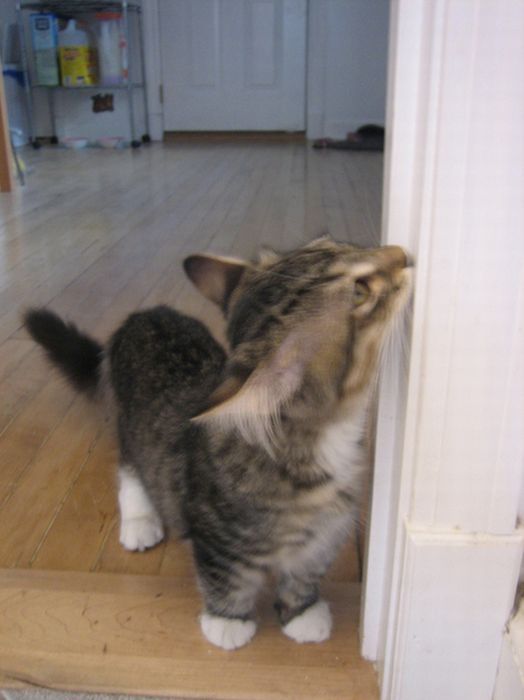Cute Cat
|
The concept of a cat breed appeared in Britain during the late 19th century. The current list of cat breeds is quite large: with the Cat Fanciers' Association recognizing 41 breeds, of which 16 are "natural breeds" that probably emerged before humans began breeding pedigree cats, while the others were developed over the latter half of the 20th century. The owners and breeders of show cats compete to see whose animal bears the closest resemblance to the "ideal" definition and standard of the breed (selective breeding). Because of common crossbreeding in populated areas, many cats are simply identified as belonging to the homogeneous breeds of domestic longhair and domestic shorthair, depending on their type of fur. In the United Kingdom and Australasia, non-purebred cats are referred in slang as moggies (derived from "Maggie", short for Margaret, reputed to have been a common name for cows and calves in 18th century England and latter applied to housecats during the Victorian era). In the United States, a non-purebred cat is sometimes referred to in slang as a barn or alley cat, even if it is not a stray.
Cats come in a variety of colors and patterns. These are physical properties and should not be confused with a breed of cat. Furthermore, cats may show the color and/or pattern particular to a certain breed without actually being of that breed. For example, cats may have seal point coloration, but not be Siamese.
Some original cat breeds that have a distinct phenotype that is the main type occurring naturally as the dominant domesticated cat type in their region of origin are sometimes considered as subspecies and also have received names as such in nomenclature, although this is not supported by feline biologists. Some of these cat breeds are:
• F. catus anura – the Manx – The Manx is a stocky, solid cat with a dense double coat (long or short), a compact body, very short back, hind legs that are visibly longer than the front legs, big bones, a wide chest, and greater depth of flank (sides of the cat nearest the rear) than other cats. A female Manx would not weigh more than 10 pounds and a male does not weigh over 12 pounds. Specific to this breed is the way their ears appear as a "cradle" when looked at from behind. A Manx cat is mainly recognized by its appearance as it does not have a tail. Although some of them may have a small tail, most Manx cats are tailless. Because of the genetic deformation of these cats they are susceptible of developing what is called Manx Syndrome, a condition that could be fatal for a kitten. Although the gene normally affects only the tail, there is the risk of causing damage to the spine such as fused vertebrae.
|
|















